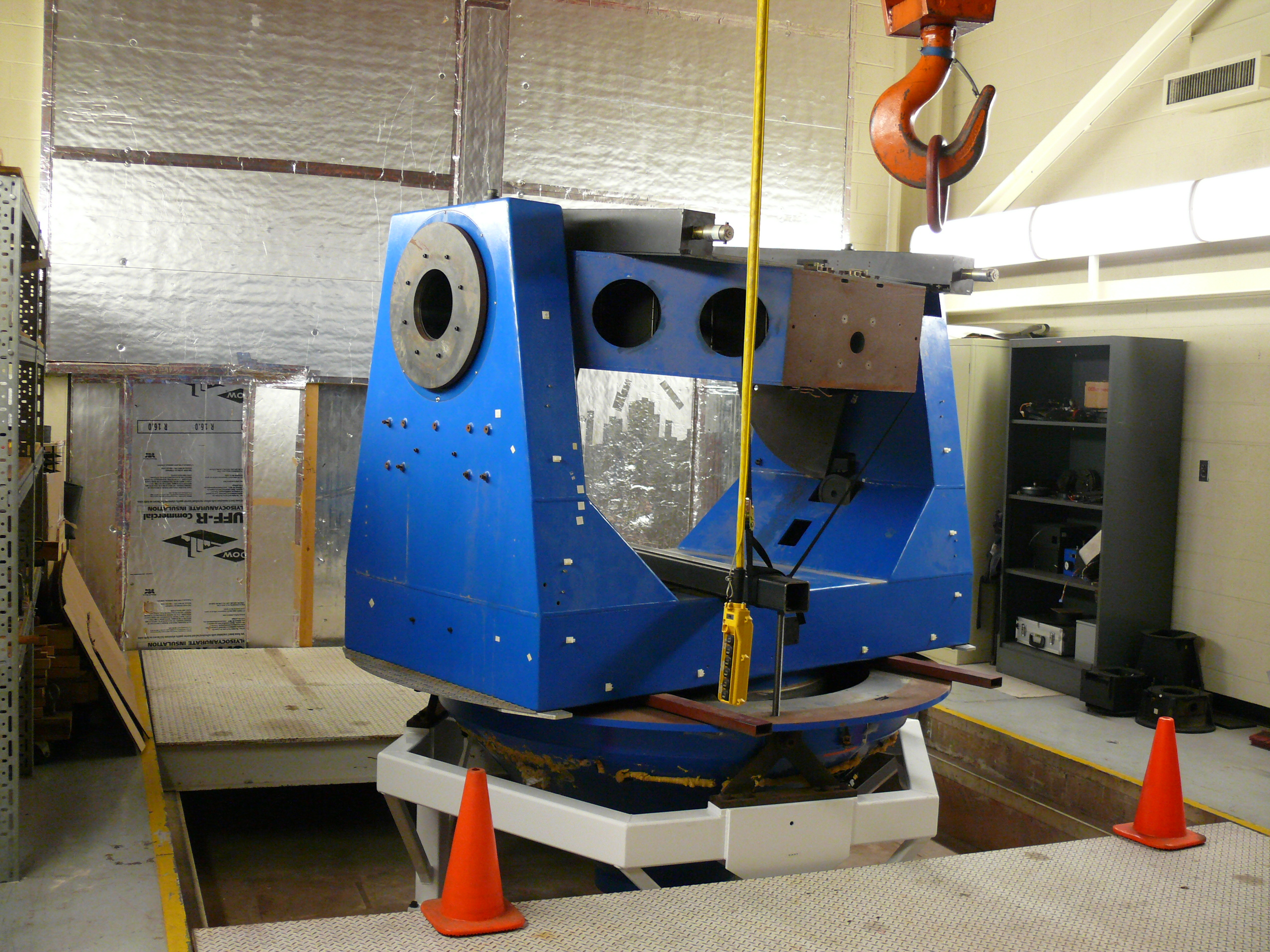Early in the morning on May 28th, 2014, LSST’s 1.2-meter Calypso telescope took the first step of a long voyage from Kitt Peak National Observatory to Chile’s Cerro Pachón mountain, where it will accompany LSST as an essential calibration instrument. Through the efforts of a skilled team and thorough preparation, the move was successful, and by late-afternoon on the same day, Calypso had been delivered to the NOAO loading bay in Tucson.
As part of LSST’s calibration work package, Calypso is slated for transport to Chile in 2017. Until then, it will reside at NOAO, where it is being upgraded with a new control system, new drives, and a recoated mirror.
Once the only privately-owned telescope among the state-of-the-art suite of astronomical facilities on Kitt Peak, Calypso was generously donated to LSST in 2008 by its proprietor, astrophysicist and entrepreneur Dr. Edgar Smith.
Smith named Calypso after the sharp-sighted Greek goddess who captured Odysseus for seven years – “about the time it took to build [the telescope],” he recalls in Timothy Ferris’s book Seeing in the Dark.
Now, more than a decade after its initial installation, LSST engineers were faced with the colossal task of dismantling Calypso and removing it from its site before the onset of the summer monsoon season.
Perched 35 feet off the ground on a 14,000-pound mount, Calypso’s uninstallation was a dedicated operation, requiring over one month of planning, a $25,000 investment in transportation costs, 6 NOAO staff members for truss and optics removal and 8 individuals involved in lifting the telescope from its mount, and a 175-ton crane to complete the job.
Even so, “Calypso was built to be relocated,” says LSST Telescope and Site subsystem manager Bill Gressler.
 Gressler’s team crafted a custom-made stand in-house for test and transport of the telescope. All optics were carefully removed and placed in special containers to protect them from shock during transportation. The container carrying the mirror – insured at $2.5 million – was carried on a truck with air-ride suspension.
Gressler’s team crafted a custom-made stand in-house for test and transport of the telescope. All optics were carefully removed and placed in special containers to protect them from shock during transportation. The container carrying the mirror – insured at $2.5 million – was carried on a truck with air-ride suspension.
But the biggest challenge was navigating a 5-axle crane down the narrow road to the Calypso site, a meticulous ¼-mile journey that took 30 minutes.
Refurbished Calypso “will be a cool robotic machine with a slick, jazzy instrument,” promises Gressler.
Once installed on Cerro Pachón, Calypso will be used for atmospheric monitoring, measuring water vapor and overall assisting with post-processing of astronomical data produced by LSST. Adjacent to the main telescope on a mound casually known as “Calibration Hill,” Calypso will withstand the same environmental conditions as its much larger companion, surviving 120 mile-per-hour winds while functioning autonomously to provide precise calibration data.
In the meantime, Calypso’s vacant site at Kitt Peak is up for sale - great views!
View a video and gallery of images of the Calypso Relocation.


 Gressler’s team crafted a custom-made stand in-house for test and transport of the telescope. All optics were carefully removed and placed in special containers to protect them from shock during transportation. The container carrying the mirror – insured at $2.5 million – was carried on a truck with air-ride suspension.
Gressler’s team crafted a custom-made stand in-house for test and transport of the telescope. All optics were carefully removed and placed in special containers to protect them from shock during transportation. The container carrying the mirror – insured at $2.5 million – was carried on a truck with air-ride suspension.